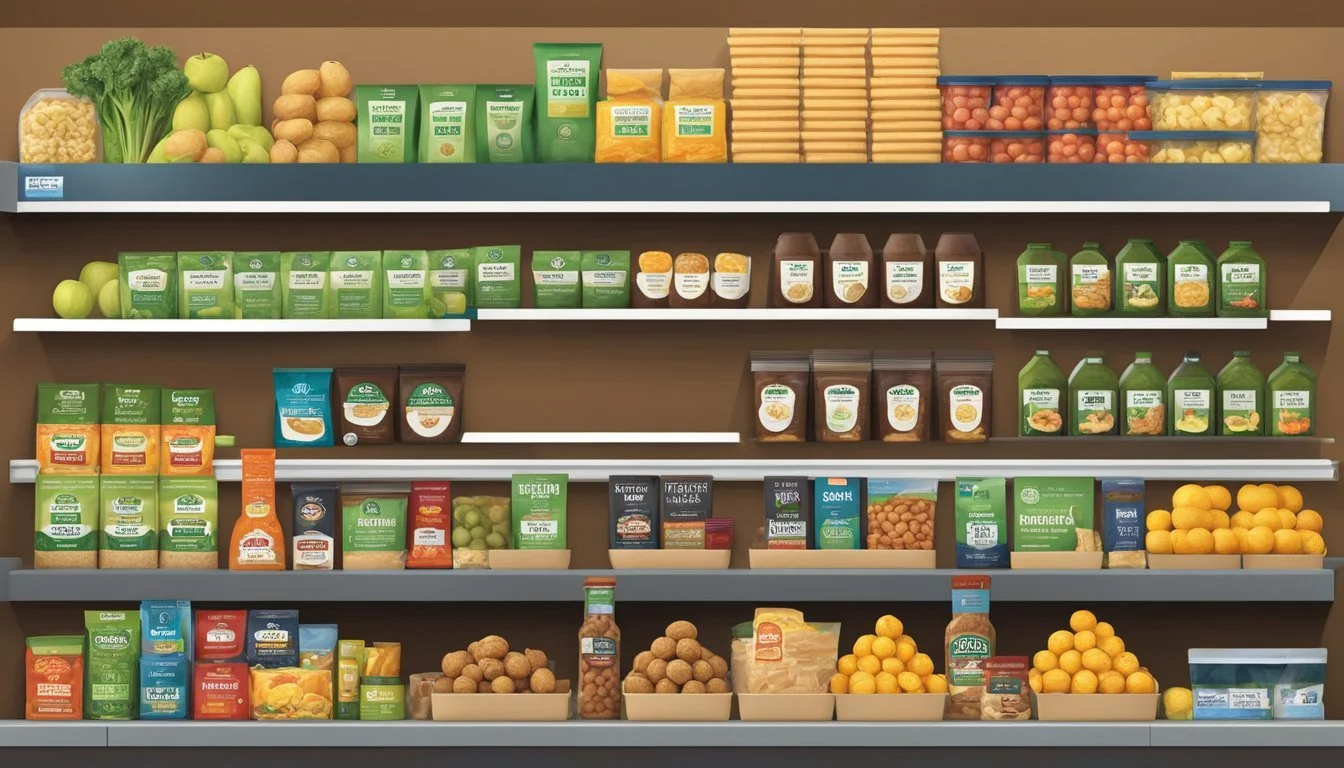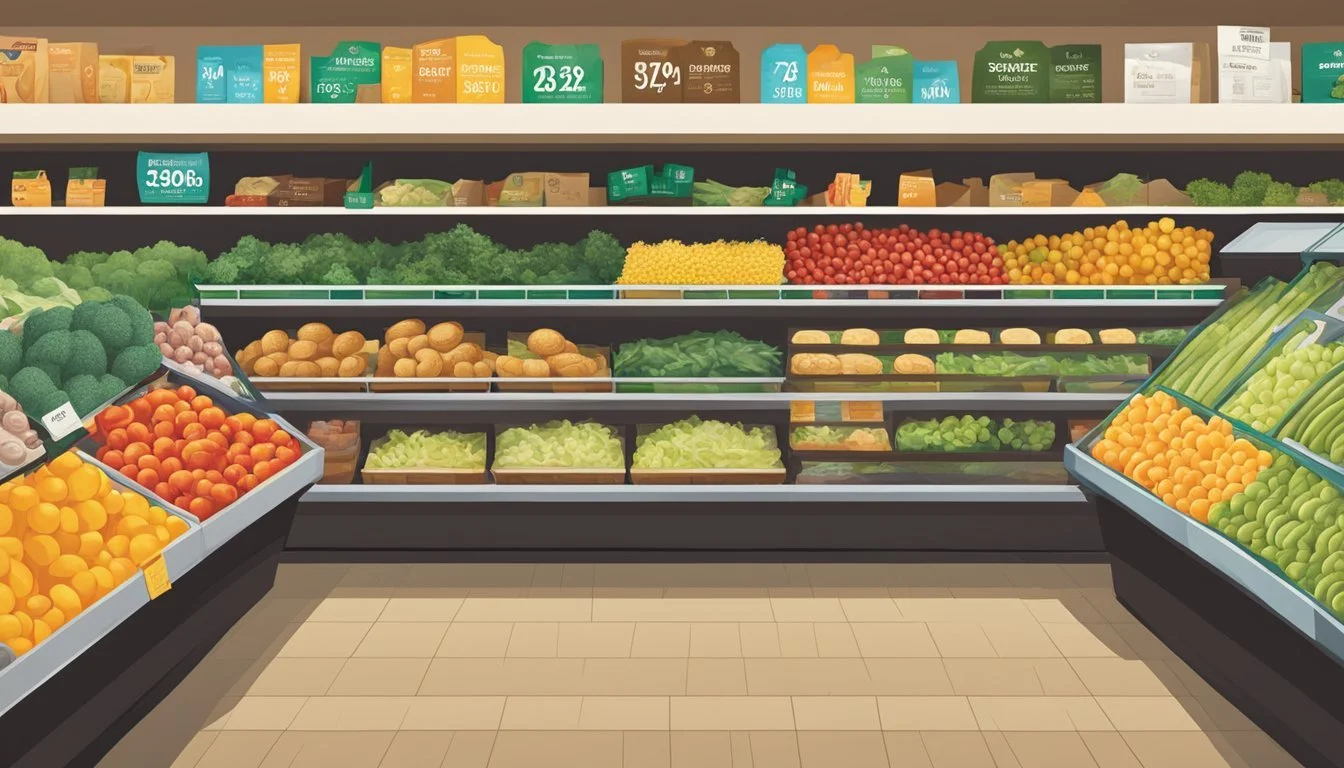Is Whole Foods Cheaper Than Giant Eagle?
Comparing Grocery Store Prices
Part of Our Grocery Store Guide with Details on Whole Foods Market Prices and Giant Eagle Prices
When comparing grocery store prices, particularly those of Whole Foods and Giant Eagle, consumers often have preconceived notions about where they'll find the best value for their dollar. Whole Foods, a supermarket chain known for its focus on organic and high-quality products, is commonly perceived as the more expensive option when compared to other retailers. This perception is partly due to its wide selection of specialty and artisanal items, as well as its aesthetically pleasing store layout and additional services like online shopping and grocery delivery.
Giant Eagle, on the other hand, is a regional supermarket chain that operates primarily in the Midwestern and Mid-Atlantic regions of the United States. It offers a more traditional grocery shopping experience and is frequently thought to have more affordable pricing than Whole Foods. However, the actual price difference between these two retailers can vary based on the type of products purchased, current promotions, and geographic location. Price comparisons and consumer surveys have indicated that while there are indeed savings to be found at Walmart and stores like Food Lion, the price margins between Whole Foods and Giant Eagle are less clear-cut and warrant a closer examination.
Market Overview and Retail Landscape
This section provides an in-depth look at the differences between supermarket chains and how location affects grocery pricing.
Comparing Supermarket Chains
Supermarket chains vary widely in pricing and the types of goods they offer. Walmart and Aldi are often recognized for their affordability, with Walmart having the edge in overall value on a basket of items. Target is also competitive but emphasizes a balance between cost and a curated selection. Kroger, with prices coming closer to Whole Foods Market, offers a wide selection, including premium items. Trader Joe’s is known for its unique products at reasonable prices. In comparison to these, Giant Eagle and Whole Foods have historically been perceived as higher-end stores with a focus on quality, but they've taken steps to offer more competitive pricing, with Whole Foods Market’s prices on produce now 7% cheaper than Kroger’s.
Walmart: Best overall value
Aldi: Known for low prices on essentials
Trader Joe’s: Reasonable prices with unique offerings
Kroger: Wide selection, prices converging with Whole Foods
Whole Foods Market: Higher quality focus, with competitive pricing on produce
Giant Eagle: Higher-end, quality focus, with steps toward competitive pricing
Families can save significantly by choosing stores like Walmart and Food Lion, whereas Publix, Wegmans, and Safeway offer different balances of cost and selection. Sprouts focuses on health-conscious offerings which can affect its pricing structure.
The Role of Location in Pricing
The geographical location of grocery stores plays a significant role in pricing. For instance, stores in urban areas may have higher operational costs, which can lead to increased prices for consumers. Conversely, stores in suburban or rural locations might offer lower prices due to reduced expenses. Local economic factors, such as average income and real estate costs, can also influence the price points set by supermarket chains.
Retailers such as Whole Foods Market and Giant Eagle might have region-specific pricing strategies to stay competitive in different markets. It’s important for consumers to consider how these pricing strategies affect their grocery bills, as what might be more affordable in one location could be expensive in another.
Pricing Strategies and Consumer Perception
Understanding the pricing strategies of Whole Foods and Giant Eagle reveals differences in how these stores position themselves in the market. Consumers often look to these strategies to inform their shopping choices, aiming to balance cost and quality.
Price Comparison Tactics
In the competitive grocery sector, Whole Foods generally cultivates an image of premium quality, which is reflected in its pricing strategy. Consequently, prices at Whole Foods may not always align with budget-conscious consumers. Comparatively, Giant Eagle positions itself as providing value across a range of grocery items, with sale prices and deals designed to attract shoppers looking to save money.
For example, a price comparison may look like this:
Item Whole Foods Price Giant Eagle Price Milk (1 gallon) $3.49 $3.29 Bread (1 loaf) $2.79 $2.49 Eggs (dozen) $2.99 $1.89
'Whole Paycheck' and Price Reputation
The moniker 'Whole Paycheck' has been used by some consumers to describe Whole Foods due to the perception that its prices are consistently higher than most other grocers, reflecting on its reputation for being one of the most expensive supermarkets. Perceptions like this impact consumer behavior and companies' profit margins as they decide where to shop based on the perceived value they receive.
Supermarket Price Wars
Both Whole Foods and Giant Eagle are engaged in supermarket price wars, aiming to offer competitive prices to attract and retain customers. Whole Foods, after its acquisition by Amazon, has made efforts to adjust its high-price image by introducing discounts and cost-saving initiatives. However, Giant Eagle frequently offers weekly specials and discounts to its customers, actively promoting lower prices.
Consequently, both stores carefully monitor their competitors' pricing strategies to ensure they remain competitive while seeking to maintain profitable margins. This strategic focus on price reflects how significantly the quest to save money affects both consumer decisions and supermarket efforts to increase market share.
Product Categories and Cost Analysis
This section specifically examines the pricing disparities between Whole Foods and Giant Eagle across various product categories, including fresh produce and meat, organic versus conventional products, and other essential grocery items.
Fresh Produce and Meat Pricing
When comparing fresh produce and meat between Whole Foods and Giant Eagle, it is observed that Whole Foods has been known to price its organic produce and meat competitively. For instance, Whole Foods' produce section sometimes undercuts conventional grocery store prices, benefiting from economies of scale due to its acquisition by Amazon. Meat pricing at Whole Foods is generally on par with premium grocery stores, but special deals and Amazon Prime discounts may offer savings.
Organic versus Conventional Products
Whole Foods predominantly stocks organic foods, which can command a higher price point compared to Giant Eagle's conventional products. However, as organic foods become more mainstream, Whole Foods has seen a reduction in the price gap. Organic peanut butter and other similar organic pantry staples can be comparably priced at both stores, although Whole Foods may offer a wider range of organic options.
Dairy, Dry Goods, and Pantry Items
For dairy and dry goods such as rice, pasta, and canned goods, Giant Eagle may offer more promotions and discounts, which could result in lower overall prices. In the pantry items section, Whole Foods focuses more on offering a diverse array of specialty and health-conscious options, like gluten-free and non-GMO products, which can affect pricing. Frozen items and yogurt, including a variety of cheese and dairy products, are observed to have competitive pricing, with the possibility of Whole Foods being slightly higher in price due to a focus on organic and natural brands.
Discounts and Membership Benefits
When comparing the discounts and membership benefits of Whole Foods and Giant Eagle, one should consider the unique advantages each retailer offers. Whole Foods, in partnership with Amazon, provides Amazon Prime members with various saving options, while Giant Eagle offers its own array of discounts.
Leveraging Amazon Prime for Savings
Amazon Prime members can enjoy special savings at Whole Foods, which includes Prime member deals on a range of organic products and everyday essentials. In-store, members can save by scanning their Prime code or using the Amazon app. An extra 10% off storewide sales is one of the headline benefits, making organic food more affordable for subscribers. This collaboration with Amazon allows Prime members to access significant savings, although alcohol is typically excluded from these discounts.
Store Brands and Bulk Purchases
Whole Foods offers its own store brands, like the 365 Everyday Value line, which often provide comparable quality at a lower price than name brands. Shoppers can also take advantage of savings by purchasing items from the bulk section, which often features organic food options. This not only allows for cost management but also helps in reducing packaging waste. Both store brands and bulk purchases are strategic ways for customers to save money without compromising on the quality of their groceries.
Consumer Experience and Service Offerings
When comparing Whole Foods and Giant Eagle, a customer's experience extends beyond pricing to the convenience and loyalty benefits offered by each grocery chain.
Prepared Foods and Convenience
Whole Foods Market is renowned for its extensive selection of prepared foods, providing a convenient option for customers who seek quick, chef-quality meals without the prep time. They offer a variety of international cuisines, from sushi to Italian, which caters to the busy lifestyles of their customers. On the other hand, Giant Eagle also presents an array of prepared foods, including their own Market District offerings, though the variety may vary significantly depending on the location.
Customer Engagement and Loyalty Programs
Giant Eagle seeks to engage customers with its advantage card, which enables shoppers to earn fuel perks and cashback rewards on their grocery purchases. This loyalty program is designed to incentivize repeat business and deeper engagement with the store's offerings. In contrast, Whole Foods Market, now owned by Amazon, integrates with Amazon Prime to provide special discounts and benefits to Prime members, including exclusive sales on select grocery items, thus adding value to their grocery shopping experience for Amazon-affiliated customers.
Conclusion
When evaluating the costs of Whole Foods compared to Giant Eagle, one should consider both the price per ounce and the overall quality offered by these grocery chains. Recent analyses indicate that Whole Foods is not consistently more expensive than Giant Eagle. In certain cases, like with organic produce, Whole Foods has been found to be comparatively cheaper.
The assumption that Whole Foods is universally pricier does not hold true for all items. For example, extra virgin olive oil, a staple healthy product, may have a competitive price at Whole Foods when considering the quality and price per ounce. Giant Eagle could potentially have lower prices on some items, but shoppers have reported instances where produce purchased from there had spoiled quickly.
The concept of ‘cheap’ food transcends mere price tags; it’s about value for money, which includes longevity and nutritious content of the products. Therefore, customers inclined towards healthier food options might find Whole Foods to offer better value, despite the slight premium in price.
In essence, the price difference between Giant Eagle and Whole Foods fluctuates based on items, with Whole Foods sometimes being the more cost-effective option, especially for those valuing organic produce. Shoppers should always weigh both price and quality before concluding which store offers the best overall shopping experience.






